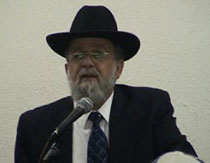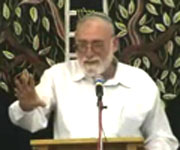Beit Midrash
- Sections
- Chemdat Yamim
- Parashat Hashavua
The key may be in understanding the word nazir. In several places in Tanach (see Vayikra 22:2 for one of many), the root means to stay away from things. A nazir refrains from things others do not. Rashi (Bamdibar 6:2) takes this approach to the word’s etymology. However, the same root has another, different meaning. A nezer is a crown (see Vayikra 21:12). Rav Hirsch puts the stress on this meaning. This disagreement may be based on different views of nezirut. Is it designed to protect one from corruptive influences (Rashi), or is it an attempt to elevate him (Rav Hirsch)?
Chazal (Berachot 63a) seem to support Rashi’s thesis: "Why did the Torah place the section on nazir next to that of sota (a woman suspected of infidelity)? To tell you that whoever sees a sota in her disgrace should separate (yazir) himself from wine." However, Rav Hirsch has strong textual support. The Torah explains that a nazir cannot be in contact with the dead because Hashem’s nezer is on his head (Vayikra 6:7).
Probably both meanings and theses share truth. The Torah uses (ibid.: 5,8) the term of kadosh (holy), as Rav Hirsch stresses, as the nazir sanctifies himself. On the other hand, Rashi (19:2) says that kadosh refers to staying away from problematic things. In fact, a holy person or object (kohen, korban, etc.) must stay away from things that others do not. Conversely, one who voluntarily stays away from certain things becomes holy. Yet, a nezer is also a sign that someone does not "mix into the crowd."
Actually, the p’sukim hint that the question of whether a nazir is about making a positive change or avoiding the negative depends on the halachic restriction. "Kadosh" appears regarding two of the three restrictions, avoiding the deceased and not cutting hair, not regarding wine-related products. A corpse is not corruptive but kohanim’s holiness, for example, requires that they avoid it. Cutting one’s hair is not corruptive, but one might refrain from it because he wants to ignore physical concerns such as his appearance, as befits one who wants to be on a peculiar but potentially high level. On the other hand, wine has lowered many people’s levels. One may want to avoid it just to remain a good average person, not a kadosh; thus, the Torah omits kadosh in that context. Actually, Chazal’s statement about avoiding the pitfalls of promiscuity mentions refraining from wine alone - so as not to be negatively impacted.
Our lives of service to Hashem are replete with sur me’rah (avoiding negative) and aseh tov (doing positive). May we succeed in findng a proper balance in an effective, appropriate manner for our (hopefully) noble goals.

The Torah Connection
Various Rabbis | 5 Adar I 5768

Parashat Hashavua: “Kings Will Descend from You”
Rabbi Yossef Carmel | Kislev 5786

“You Shall Do for Me a Sanctuary... Tabernacle”
Rabbi Yossef Carmel | 28 Shvat 5768

“How Will I Know …?”
Rabbi Shaul Yisraeli zt"l | 5774

Various Rabbis
Various Rabbis including those of of Yeshivat Bet El, such as Rabbi Chaim Katz, Rabbi Binyamin Bamberger and Rabbi Yitzchak Greenblat and others.

Unfulfilled Raffle Prize – part I
5777 Tammuz 22

Moreshet Shaul: A Crown and its Scepter – part II
Based on Siach Shaul, Pirkei Machshava V’Hadracha p. 294-5
Av 5785

Unfulfilled Raffle Prize – part II
Av 1 5777






















